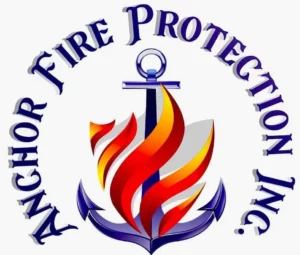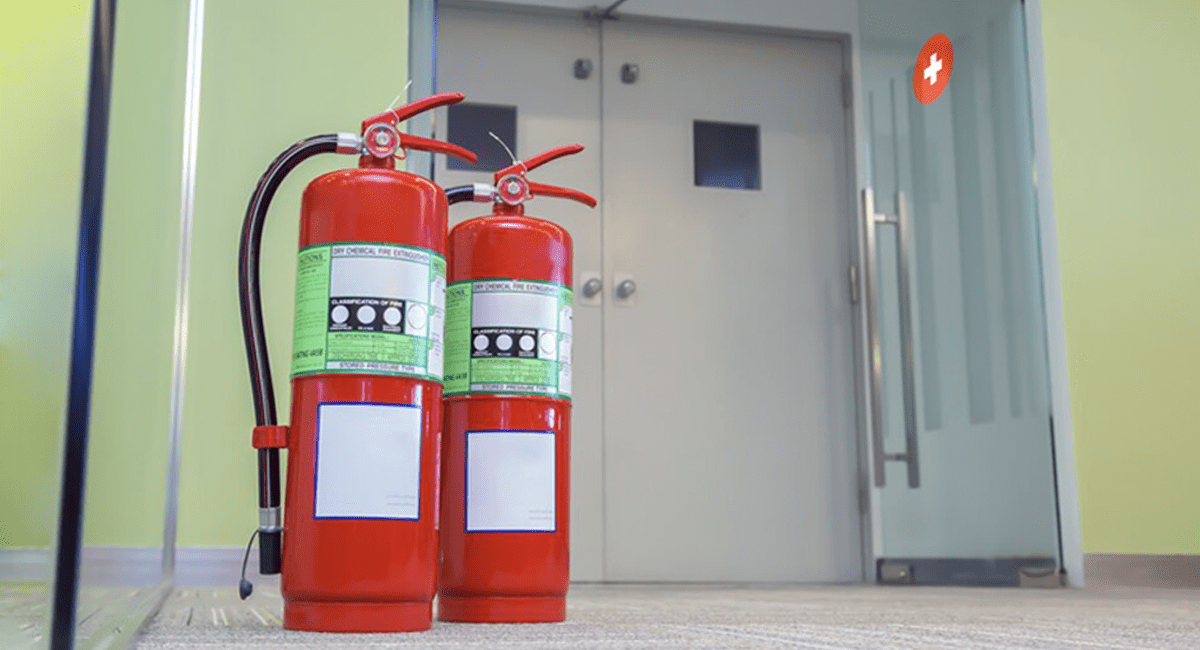Fire Safety Tips for Hospitals: Protecting Patients, Staff, and Facilities
A hospital is one of the most protected building in a country. Fire safety in hospitals is required since a fire at a medical facility might risk the lives and health of individuals considerably more. Patients cannot leave their hospital beds due to physical or medical issues. Furthermore, healthcare facilities include significant amounts of oxygen, volatile chemicals, and other pharmaceuticals that have the potential to cause fires and discharge dangerous toxins into the air. Fire protection is a top priority for hospital managers, personnel, and patients.
Automatic suppression systems, structural protection, detection and alarm systems, and effective fire resistance-rated compartmentalization maintain safety throughout the construction process. The facilities manager is in charge of protecting the building’s safety features. This post will look at some of the most important factors to consider when designing and implementing hospital fire safety measures for medical facilities.
Fire Safety Rules for Hospitals
Hospitals must be well-equipped to handle any crisis resulting from a fire caused by materials on their premises. The following guidelines can help authorities create efficient fire safety practices.
1. Fire Prevention Techniques
Electrical Safety
Hospitals depend on electricity to run lighting, equipment, and other necessary components. There is a chance that different cables, lights, cords, and power sources will catch fire. Don’t use extension cords and regularly inspect electrical outlets and wiring. Damaged indicators like frayed wires or overloaded outlets need to be fixed right away. The electrical systems should be installed and maintained by certified electricians.
Heated Equipment
Hospitals use a variety of equipment. Several of these parts, like defibrillators, require heat to operate or get heated up while in operation. When too many tasks are being performed simultaneously, monitors may overheat. In extreme circumstances, the equipment may catch fire and spread to other medical facilities.
Kitchen Areas
Cooking appliances are the source of fires in hospital kitchens. Don’t place flammable objects near cooking areas. Hospitals should supply dry chemical fire extinguishers in the kitchen areas and train staff members on how to use them.
Storage of Flammable Materials
Combustible materials such as cleaning supplies and medicinal supplies. They must maintain the right temperature and storage conditions for maximum safety. Grease buildup can be avoided by cleaning kitchen and laundry equipment on a regular basis.
Smoking Policies
In hospitals, smoking creates a serious fire risk, especially in the presence of oxygen. Train employees and patients to use the proper ashtrays that are provided in smoking zones and avoid smoking in restricted areas.
2. Fire Detection and Suppression Systems
Fire Alarms
NFPA 72 requires the installation of a fire alarm system, which includes pull stations, heat, and smoke detectors.
Sprinkler Systems
When high temperatures are detected, automatic fire suppression systems activate, releasing chemicals or water to contain the fire. These systems are necessary in spaces like IT server rooms and operation rooms that have life-saving machinery.
Fire Extinguishers
The hospital should have portable fire extinguishers placed throughout the building, and staff members should receive training on how to use them with proper extinguishing chemicals.
Fire Doors and Compartments
Hospital rooms are divided into sections by fire-rated doors and barriers, which prolongs the time for a safe escape and reduces damage.
Fire Dampers
The HVAC system of every hospital must include fire dampers. These methods build a barrier that stops smoke and fire from spreading through the ventilation system and air ducts of the building.
Standpipe Systems and Hoses
Firefighters use standpipe systems to put out fires of different intensities quickly and efficiently, depending on the capacity of the system.
Employee Alarm System
Some alarm systems notify every employee of the threat of a fire by using a particular sound. Employees are trained to recognize and respond to specific signal sounds.
3. Emergency Planning and Evacuation
A hospital fire response plan should include a broad strategy for getting patients and staff to safety. A documented fire response plan should be in every hospital. It should outline how and when to sound and report a fire alarm, utilize a fire extinguisher, or evacuate places.
Evacuation Plans
Hospitals must have well-defined evacuation plans with clear routes and assembly points. Staff training must cover all topics, with a variety of fire drills to assess their competence.
- Move people out of the room or area and call for assistance from the nursing station. If patients cannot move, assist them to leave the room by utilizing a chair, wheelchair, or blanket drag.
- Press the alarm button. It can inform staff without frightening patients or guests by announcing code red. Avoid shouting “fire” so as not to scare people.
- Shut doors to prevent smoke and flames from spreading quickly. Return patients to their rooms if they are not in immediate danger.
- Press, aim, squeeze, and sweep (PASS) is the process to using a fire extinguisher to put out the fire. Shut the door if you don’t feel safe, and wait for the fire department to show up.
Staff Training
Hospital staff members must participate in fire drills to prepare and compose themselves for patients during a fire without scaring them.
- If doctors are checking a patient, they should remain with them until the emergency or drill is over. People in non-patient areas need to wait for the all-clear message.
- Volunteers can assist staff by shutting doors and comforting patients with the fire safety protocol.
- Students should enter closed rooms and pretend to be visitors unless instructed otherwise.
Awareness among Patients and Visitors
Patients and visitors should be given information regarding fire safety precautions. Everyone can react swiftly and effectively when there are clear signs, including evacuation maps and instructions.
5. Audits and Documentation
Inspection
The alarms, sprinklers, and fire doors, should be inspected regularly as per the The NFPA criteria. Integration with HVAC can improve the fire alarm system’s efficiency.
Record-keeping
Fire marshals and accreditation agencies can check records of fire safety procedures.
Additional Considerations
Fire Class
Hospital employees must take fire safety training in order to handle fires effectively.
- Class A: Common flammable materials like wood, paper, and cloth.
- Class B: Flammable liquids like gasoline, oil, and grease.
- Class C: Electrical equipment.
- Class D: Combustible metals like magnesium and titanium.
- Class K: Cooking oils and fats.
Lighting
Emergency lighting systems are designed to direct patients and personnel to safety in the event of a fire.
Coordination
Experts in fire safety can offer important insights into current laws and recommended procedures for the setup, maintenance, and assessment of fire safety equipment.
Compliance
Regular audits and reviews help maintain high safety standards and identify areas for development.
Compartmentalization
Creating fire-resistant walls, doors, and hallways within the hospital is known as compartmentalization.
Backup
Reliable backup power systems are critical for keeping key functions running, such as life support.
Fire Safety for Nurses
Nurses play an important role in maintaining hospital safety. We are going to offer the following advice to nurses to improve fire safety:
- Nurses must be attentive to emergencies and know where to get safety equipment.
- They need to participate in fire drills conducted on regular basis.
- Nurses must have strong communication skills to talk to patients and coworkers during emergencies.
- They must be prepared to use wheelchairs and evacuation chairs to help patients during rescues.
Measures for Fire Safety in Hospitals
- Use materials, doors, and fabrics that resist flames.
- Ventilation and smoke barriers can manage smoke during fires to allow for safe evacuation.
- A fire safety management plan should specify the roles, duties, and protocols.
- Clearly mark the locations of fire safety equipment, evacuation routes, and emergency exits.
- Conduct regular evaluations and fire safety committee meetings.
Case Studies
The 2013 fire at a Russian mental facility resulted in multiple fatalities, highlighting the importance of having functional fire warning systems and proper evacuation procedures. Similarly, the 2011 fire at a hospital in Kolkata, India, demonstrated the importance of healthcare staff obtaining proper training and being prepared.
Protect Staff, Patients, and Facility
Hospital fire safety involves emergency preparation, detection, suppression, and training. These strategies may protect the facilities, people, and patients from the damaging effects of fire. Learn fire safety rules for hospitals, take fire classes, and make sure staff members are adequately trained.
Healthcare facilities can definitely increase their safety by following fire safety procedures for both staff and patients. Select Anchor Fire Protection Inc. right away if you wish to upgrade your fire safety protocols. Our superior fire safety services follow the strict guidelines set by OSHA and the National Fire Protection Association. Your hospital is better protected against fires with our inspections, replacements, and safeguard measures.
KEEP YOUR PROPERTY SAFE
Related posts
-
Fire Safety Tips for the Workplace
-
Fire Safety Tips for Hospitals
-
How to size fire pumps?
-
Different types of sprinklers?
-
What is fire protection system?
-
Fire Extinguisher Inspection
-
Fire Sprinkler System Components
-
What are the most common types of fire pumps?
-
How much does a fire sprinkler system cost?
-
What is active and passive fire protection?

